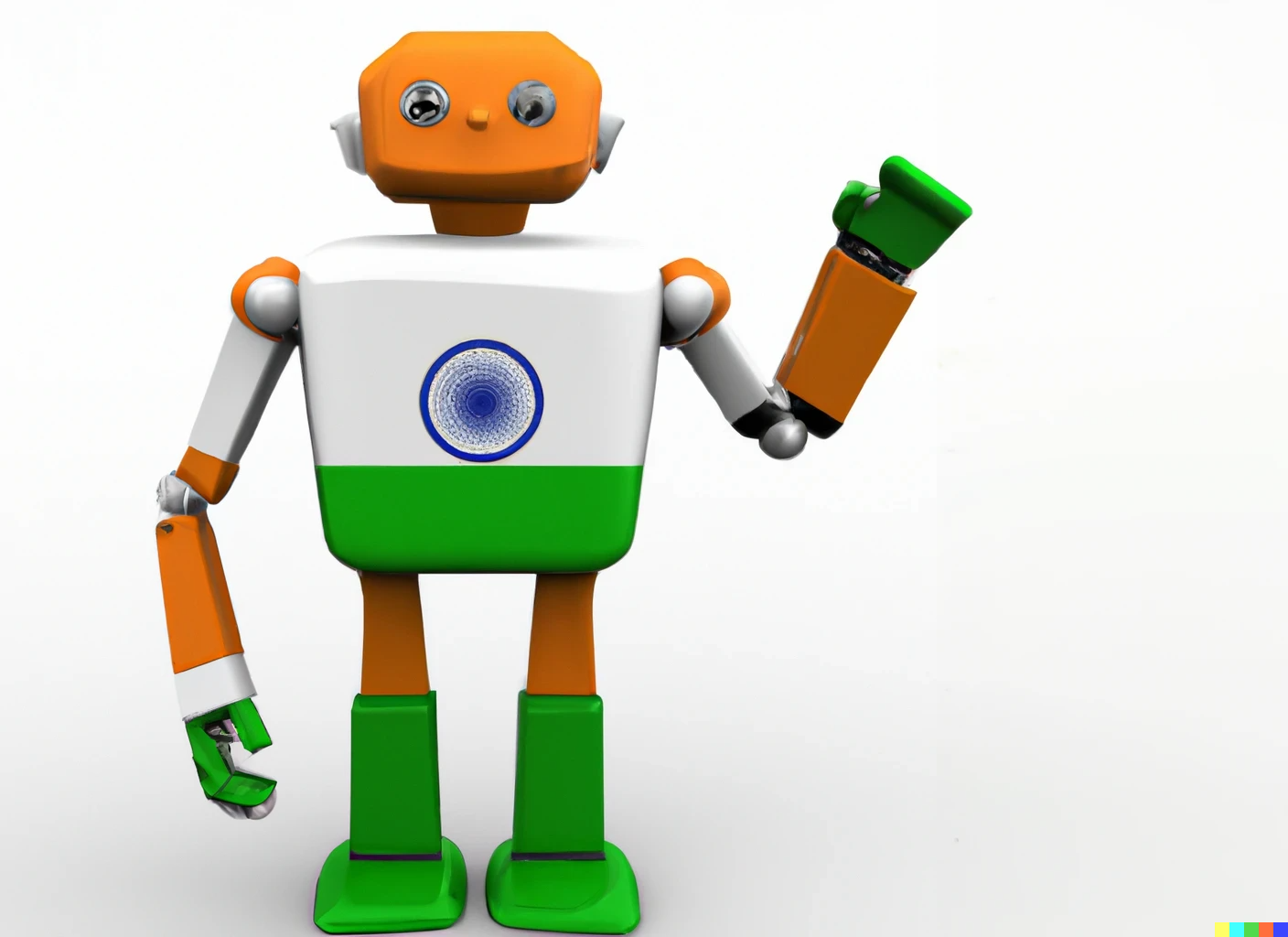India is loving GenAI. AI usage, particularly GenAI, in the subcontinent is clearly high. But whether GenAI is loving India back or not, remains to be seen.
Microsoft CEO Satya Nadella said, “If the Indian economy is going to be $5 trillion, the AI-driven part could be something like 10%, maybe $500 billion of it”. Generative AI is expected to add about $1.2 to 1.5 trillion to India’s GDP by 2030. But while the efforts are becoming visible, there is a long way to go.
If the Indian economy is going to be $5 trillion, the AI-driven part could be something like 10%, maybe $500 billion of it
Microsoft CEO Satya Nadella
According to Zscaler, Inc.’s 2024 AI Security Report, Indian enterprises are leading APAC markets when it comes to AI/ML usage. In fact, the top five countries generating the most enterprise AI transactions are the US, India, the UK, Australia, and Japan.
Enterprise AI/ML transactions increased from 521 million monthly in April 2023 to 3.1 billion monthly by January 2024. The most popular AI/ML applications for enterprises by transaction volume are ChatGPT, Drift, OpenAI, Writer, and LivePerson. Enterprises use AI/ML tools and mapped trends across sectors and geographies, highlighting how businesses are adapting to the shifting AI landscape and managing security around the use of AI tools.
Read more: ‘Upskilling in a scalable way will need a pedagogy shift’
AI has already become a part of business as usual, as enterprises leverage and integrate new features and tools into their day-to-day workflows, multiplying the volume of transactions and data generated. The much higher volume is reflected in the nearly 600% increase in AI tools transactions that ThreatLabz analyzed between September 2023 and January 2024.
Indian businesses have been riding the GenAI wave high, mixing it with any possible industry. In February, Plum, an Indian insurtech platform, shared a report card of its proprietary PolicyGPT tool launched in April 2023. The AI-powered bot saw a threefold increase in adoption from launch.
Similarly, Vehant Technologies installed AI-led multi-energy, electro-mechanical, and colour scanning machines at the controversial Ram Mandir. In January, Prisma AI tied up with the Jaipur Pink Panthers, the professional Pro-Kabaddi League team owned by Bollywood film star Abhishek Bachchan, to introduce a next-generation ticketing system powered by Prisma AI’s verification platform Veri5 that allows audiences to enter using facial recognition technology instead of a QR code, making the tedious task of entering the stadiums quick and hassle-free. It also adds a layer of AI-powered security enhancements for the fans and the organizers.
Also, Air India extended access to its Generative AI-powered virtual travel assistant, AI.g, on WhatsApp. Entrepreneur and actress Sunny Leone, in partnership with Generative AI company Kamoto.AI, launched her official AI Replica.
Data is the lifeblood of every enterprise and the gold of this new era in the AI revolution
Deepen Desai, Chief Security Officer, Zscaler
“Data is the lifeblood of every enterprise and the gold of this new era in the AI revolution,” said Deepen Desai, Chief Security Officer, Zscaler.
India Highest Enterprise AI Tool Usage in APAC, Ranking Second Globally
While AI adoption trends differ globally as regulations, requirements, technology infrastructure, cultural considerations, and other factors play key roles, as per Zscaler, at 16%, India produces the second-highest percentage of enterprise AI transactions globally, coming second to the US globally.
In fact, the APAC region shows a staggering increase of nearly 1.3 billion (135%) more enterprise AI transactions compared to EMEA. This surge can likely be attributed to India’s extensive usage and adoption of AI tools for conducting business across the tech sector, and it may suggest a higher concentration of tech jobs, stronger willingness to adopt new innovations, and fewer barriers to usage.
India leading the charge in APAC when it comes to AI usage is a clear indication of the country’s unwavering commitment to leveraging technology to drive innovation and positive change. As we strive towards the transformative “Viksit Bharat vision by 2047,” AI emerges as a powerful force, infusing intelligence into every facet of our society
Sudip Banerjee, CTO, Asia Pacific & Japan at Zscaler
“India leading the charge in APAC when it comes to AI usage is a clear indication of the country’s unwavering commitment to leveraging technology to drive innovation and positive change. As we strive towards the transformative “Viksit Bharat vision by 2047,” AI emerges as a powerful force, infusing intelligence into every facet of our society,” said Sudip Banerjee, CTO, Asia Pacific & Japan at Zscaler.
But is India Only Building an AI Market?
However, though usage of AI and GenAI is surging across Asia, especially India, contributions towards its proliferation seems restricted to creating the market. As per an AIport report, Global Generative AI (GenAI) landscape, when it comes to making any contributions to GenAI, unlike Europe and North America, Asia only boasts of a few globally renowned players in GenAI, with Israel, China, India, Singapore, and Japan being the top five of the 11 Asian countries.
At least, that’s the perspective.
Efforts are On
In India, in March, Union Minister Piyush Goyal announced that the cabinet approved the India AI mission with a budget outlay of Rs 10,372 crore for five years as a significant step towards encouraging the Development of AI in India.
Prashanth Kaddi, Partner, Consulting, Deloitte India, said, “The proposal to invest into GPU-based compute capacity is a welcome effort to enable the “GenAI economy” for creating Gen AI based applications. This move gives fillip to the startup ecosystem to drive innovation helping India leapfrog into areas such as text summarization, video/image generation and next gen chatbots etc, including enablement across Indian languages.
The proposal to invest into GPU-based compute capacity is a welcome effort to enable the “GenAI economy” for creating Gen AI based applications. This move gives fillip to the startup ecosystem to drive innovation helping India leapfrog into areas such as text summarization, video/image generation and next gen chatbots etc, including enablement across Indian languages
Prashanth Kaddi, Partner, Consulting, Deloitte India
“It also would help India play the long game on AI given the public sector participation, as it would help in ensuring productionalization and democratization of Gen AI applications in the most cost effective way for adoption at scale (potentially a billion users for citizen services).
Of the approved INR10,372 crore approved, as much as INR2,000 crore has been earmarked for financing DeepTech startups, with the mission’s focus on accelerating R&D for DeepTech AI startups.
Avi Dahiya, Founder & CEO, Twyn, says, “The Union Cabinet’s approval on the outlay of Rs 10,372 crore for five years for the India AI Mission will further provide an impetus to the Deeptech revolution of India. However, this wouldn’t be complete without acknowledging the surge in Research and Development investments.
Across sectors, there is a growing realization that R&D is not an option; it is a necessity to stay competitive. The excellence in R&D is no longer limited to tech giants; even startups and small and medium-sized enterprises are actively investing in R&D
Avi Dahiya, Founder & CEO, Twyn
“Across sectors, there is a growing realization that R&D is not an option; it is a necessity to stay competitive. The excellence in R&D is no longer limited to tech giants; even startups and small and medium-sized enterprises are actively investing in R&D. The focus of the mission to accelerate R&D in Deeptech AI startups will further open up opportunities and support the creation of new business models.
Indian Startups are Burning the Midnight Oil
India’s businesses have been brining in ideas. In February, the BharatGPT group built Hanooman, a series of large language models (LLMs) that can respond in 11 Indian languages like Hindi, Tamil, and Marathi. Backed by Reliance Industries Ltd and the Department of Science and Technology, the group built the ‘Hanooman’ series of Indic language models in collaboration with Seetha Mahalaxmi Healthcare (SML).
We don’t want it to be like ChatGPT, which suffers from the ‘I’m God and I know everything’ syndrome. We don’t want to simply replicate its success [but be more than that]
Vishnu Vardhan, founder of SML and Vizzhy
Vishnu Vardhan, founder of SML and Vizzhy told AIM quite confidently, “We don’t want it to be like ChatGPT, which suffers from the ‘I’m God and I know everything’ syndrome. We don’t want to simply replicate its success [but be more than that].”
Other Indian companies and startups launching their LLMs include Google-backed CoRover’s BharatGPT, Khosla Ventures-backed Sarvam.ai’s OpenHathi, Microsoft-backed Kissan AI’s Dhenu, and Ola’s Krutrim.
In fact, Ola announced Krutrim as India’s own AI model that can understand 22 Indic languages and generate output in 10 of them. Ola’s chief Bhavish Aggarwal also claimed that his model is better than GPT-4 and Llama-2, probably the most advanced and popular LLMs out there, when it comes to Indic languages.
Read more: How Gen AI is causing excitement & apprehension globally in an election packed year
However, when the beta version of the model was actually released, it hallucinated a lot. Still experts praised Krutrim for building proprietary LLMs from scratch and developing the silicon and the infrastructure layers as well. And that is truly something.
We cannot be satisfied with just using a lot of GenAI. Instead of just working with it, we must continue to invent. If we are one of the largest markets for GenAI, then it only seems logical to come up with homegrown LLMs fed on contextual data. They might hallucinate, but as Sam Altman said in an interaction with Bill Gates, “The hallucinations of the GPT models is a feature, not a bug. It lets you discover new things.”












